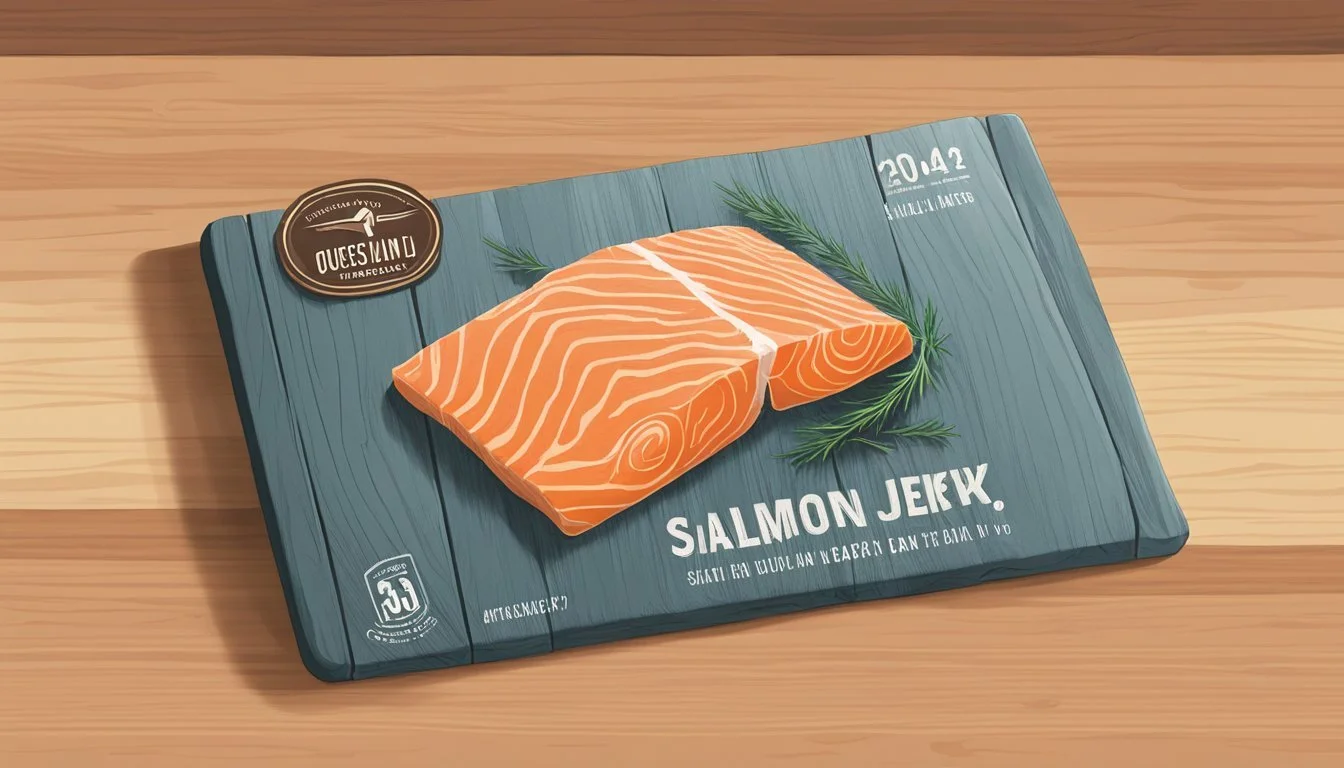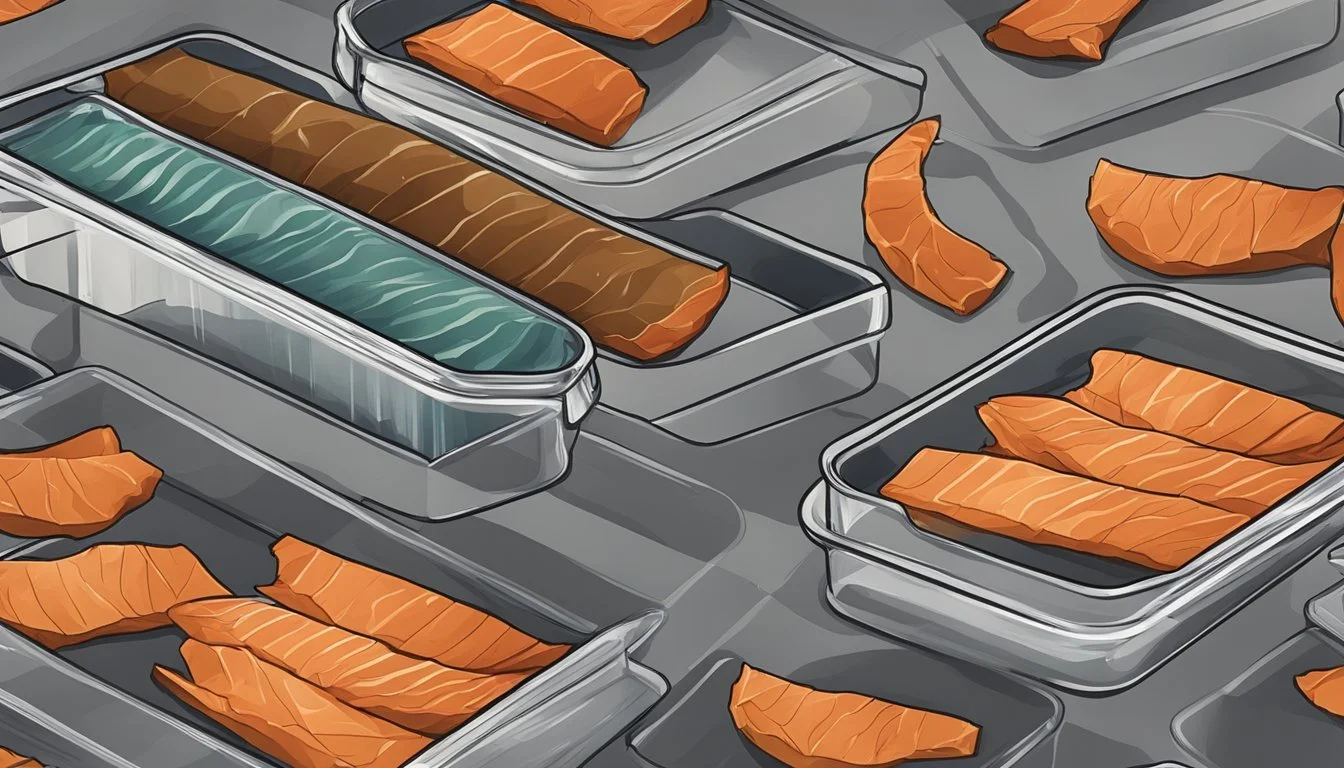Does Salmon Jerky Go Bad?
Shelf Life and Storage Tips
Salmon jerky, a popular and nutritious snack, does have a shelf life and can go bad over time. The primary signs that salmon jerky has spoiled include a foul smell, visible mold, and a change in texture. Proper storage in an airtight container, especially in the refrigerator, can help maintain its freshness for 1-2 weeks, particularly if it's homemade.
The shelf life of commercially prepared salmon jerky can extend up to 6 months or even a year if it is stored under optimal conditions. This is due to the dehydration process, which effectively removes moisture that bacteria and fungi thrive on. People who value a healthy snack option often choose salmon jerky for its long-lasting qualities and dense nutritional content when stored correctly.
Failing to store salmon jerky properly can lead to spoilage, rendering it unsafe to eat. For those who make their own salmon jerky at home, attention to preparation and storage practices is vital to ensure the longevity and safety of this delicious snack.
Understanding Salmon Jerky
Salmon jerky is a popular snack known for its nutritious benefits and unique taste. This section will explore the production techniques, types available, and nutritional advantages.
Production and Varieties
Producing salmon jerky involves selecting high-quality salmon, which is often rich in protein and healthy fats. The fish is marinated in a mix of seasonings and ingredients like soy sauce, honey, garlic, and spices.
After marination, the salmon is dehydrated at a low temperature to preserve its nutrients. Common varieties include traditional smoked, spicy, and sweet-tangy flavors.
Different preparation methods and storage conditions impact the jerky’s shelf life, typically 1-2 weeks in the fridge if homemade, due to its high-fat content.
Nutritional Benefits
Salmon jerky provides various health benefits. It is high in protein, aiding muscle repair and growth. The healthy fats, particularly Omega-3 fatty acids, contribute to heart health.
It also contains essential minerals such as iron and zinc, important for immune function and energy production. Compared to other jerkies, salmon jerky is a nutritious option, making it a beneficial snack for maintaining a balanced diet.
Shelf Life and Spoilage
The shelf life of salmon jerky varies based on several factors such as preparation methods, storage conditions, and the use of preservatives. Key indicators of spoilage include changes in smell, texture, and taste. Understanding these warning signs can help ensure the product is safe to consume.
Determining Freshness
Freshness is crucial in assessing the quality of salmon jerky. Properly dehydrated and sealed jerky can last anywhere from a few weeks to several months, depending on storage conditions.
Homemade salmon jerky generally has a shorter shelf life, often about 1-2 weeks in the refrigerator.
In contrast, commercially produced jerky with preservatives may last several months.
Regardless of the type, storing the jerky in an airtight container away from light and heat extends its shelf life. Vacuum-sealing is another effective method that minimizes exposure to air and moisture.
Signs of Spoilage
Identifying spoilage in salmon jerky relies on observing specific changes:
Smell: A foul or rancid smell is one of the first signs the jerky has gone bad.
Texture: Spoiled jerky may feel unusually sticky or slimy.
Taste: A bitter or off taste indicates spoilage.
Discoloration: Watch for any unusual colors, such as dark spots or mold.
Expiration Date: Trust the expiration date on commercial packages, but also use sensory checks to confirm freshness.
If any of these warning signs are present, it is safest to discard the jerky.
Impact of Preservation Methods
Preservation methods significantly affect the shelf life and spoilage of salmon jerky. Dehydration removes moisture, making it harder for bacteria and fungi to thrive.
Use of preservatives like sodium nitrite can extend shelf life by inhibiting bacterial growth.
Plain, natural jerky without preservatives has a shorter shelf life but may appeal to those seeking a preservative-free product. Proper storage practices, including refrigeration and vacuum sealing, are vital for maintaining quality over time.
In summary, the longevity and safety of salmon jerky depend on preparation, storage, and awareness of spoilage indicators. Regular checks for smell, texture, taste, and color are essential for ensuring a fresh and enjoyable product.
Proper Storage Techniques
Proper storage is crucial to extend the shelf life of salmon jerky, retain its taste, and ensure it remains safe to eat. Key factors include minimizing moisture exposure, maintaining appropriate temperature, and protecting it from light and humidity. Here are some effective storage tactics for both home and outdoor scenarios.
At Home
Airtight Containers: Store salmon jerky in airtight containers or vacuum-sealed bags. These methods prevent moisture and air from compromising the product's quality and taste.
Cool Storage: Place the containers in a cool place, ideally in the refrigerator or freezer. Refrigerating can extend its freshness, while freezing can preserve it for an even longer time.
Avoid Light and Heat: Keep the containers away from direct sunlight and heat sources like ovens or heaters. UV rays and high temperatures can degrade the jerky's quality over time, affecting its taste and aroma.
Humidity Control: Use food-safe desiccant packets inside the containers to absorb excess humidity, further protecting the salmon jerky from moisture-related spoilage.
During Outdoor Activities
Vacuum-Seal Packs: For outdoor excursions, utilize vacuum-sealed packs. These ensure the jerky stays airtight and protected from environmental factors such as moisture and dirt.
Cooler Storage: If possible, store the sealed packs in a cooler with ice packs. This keeps the jerky at a lower temperature, preserving its taste and smell for longer periods during trips.
Shaded Storage: While camping or hiking, keep the jerky in a shaded area to avoid direct sunlight. High temperatures can accelerate spoilage.
Protect from Wildlife: Securely store jerky in animal-proof containers or hang it from a tree when camping in the wild. This prevents unwanted wildlife encounters that could lead to loss or contamination of your food supply.
These measures ensure salmon jerky remains fresh and flavorful, whether stored at home or during outdoor activities.
Risks of Consuming Spoiled Jerky
Spoiled jerky, including salmon jerky, poses significant health risks to consumers. The primary dangers come from foodborne illnesses caused by bacteria, and it is crucial to seek medical attention if symptoms arise.
Foodborne Illnesses
Consuming spoiled jerky can lead to foodborne illnesses. Bacteria such as Salmonella, E. coli, and Listeria can thrive in improperly stored jerky.
These bacteria cause symptoms including:
Nausea
Vomiting
Diarrhea
Fever
Abdominal pain
In severe cases, food poisoning can lead to dehydration and even organ damage. Spoiled jerky may exhibit signs like mold growth, sour odor, or a slimy texture. Individuals must discard any jerky showing these signs to avoid ingesting harmful bacteria.
Seeking Medical Attention
Swift medical attention is vital if someone experiences symptoms after eating spoiled jerky. Early intervention can prevent complications.
Signs that warrant immediate medical care include:
Persistent vomiting
High fever
Bloody diarrhea
Severe abdominal pain
Prompt treatment ensures safety and may involve hydration therapy or antibiotics. Individuals should inform healthcare workers about the jerky consumption to aid in accurate diagnosis and treatment. Prioritizing safety and being attentive to symptoms can mitigate the risks associated with spoiled jerky.
Making the Most of Your Salmon Jerky
Salmon jerky can be a flavorful and nutritious addition to your diet. It can be enjoyed in a variety of ways, whether you're at home, hiking, or camping with friends.
Serving Suggestions
Salmon jerky serves as a versatile healthy snack that can be enjoyed on its own or incorporated into various dishes. For instance, you can chop it into fine pieces and mix it with scrambled eggs for a protein-packed breakfast.
You could also use it as a topping for salads, adding a pleasant smoky flavor.
Another idea is to pair it with cheeses and crackers for an elegant appetizer. The jerky's rich taste can enhance many traditional snacks and meals.
Pairing Options
Salmon jerky pairs well with an array of beverages and side dishes. It goes particularly well with light beers and crisp white wines, which complement its smoky, savory profile.
For non-alcoholic options, consider pairing it with iced green tea or sparkling water.
When it comes to side dishes, fresh vegetables, hummus, and sliced fruits like apples and grapes can balance the jerky’s robust flavor, making it perfect for social gatherings or quick snacks during a hike.






